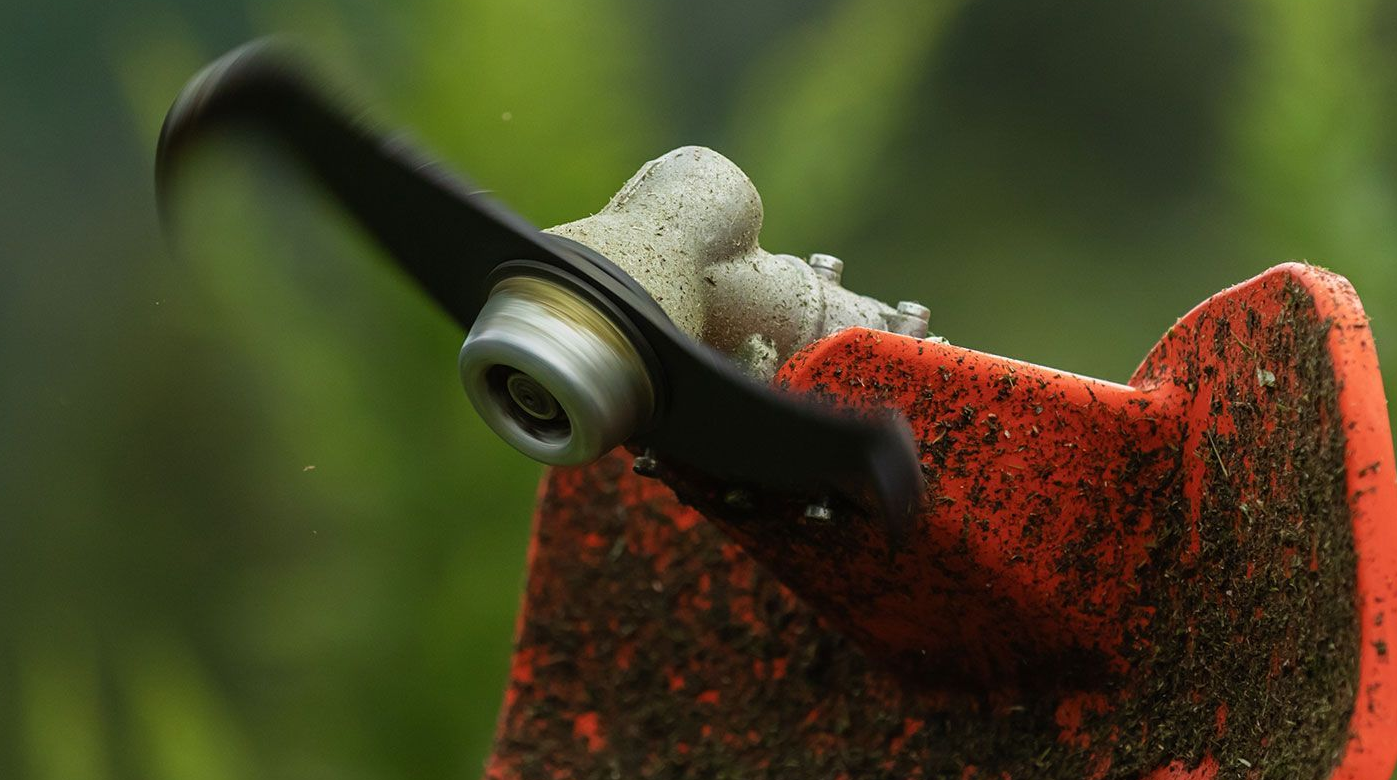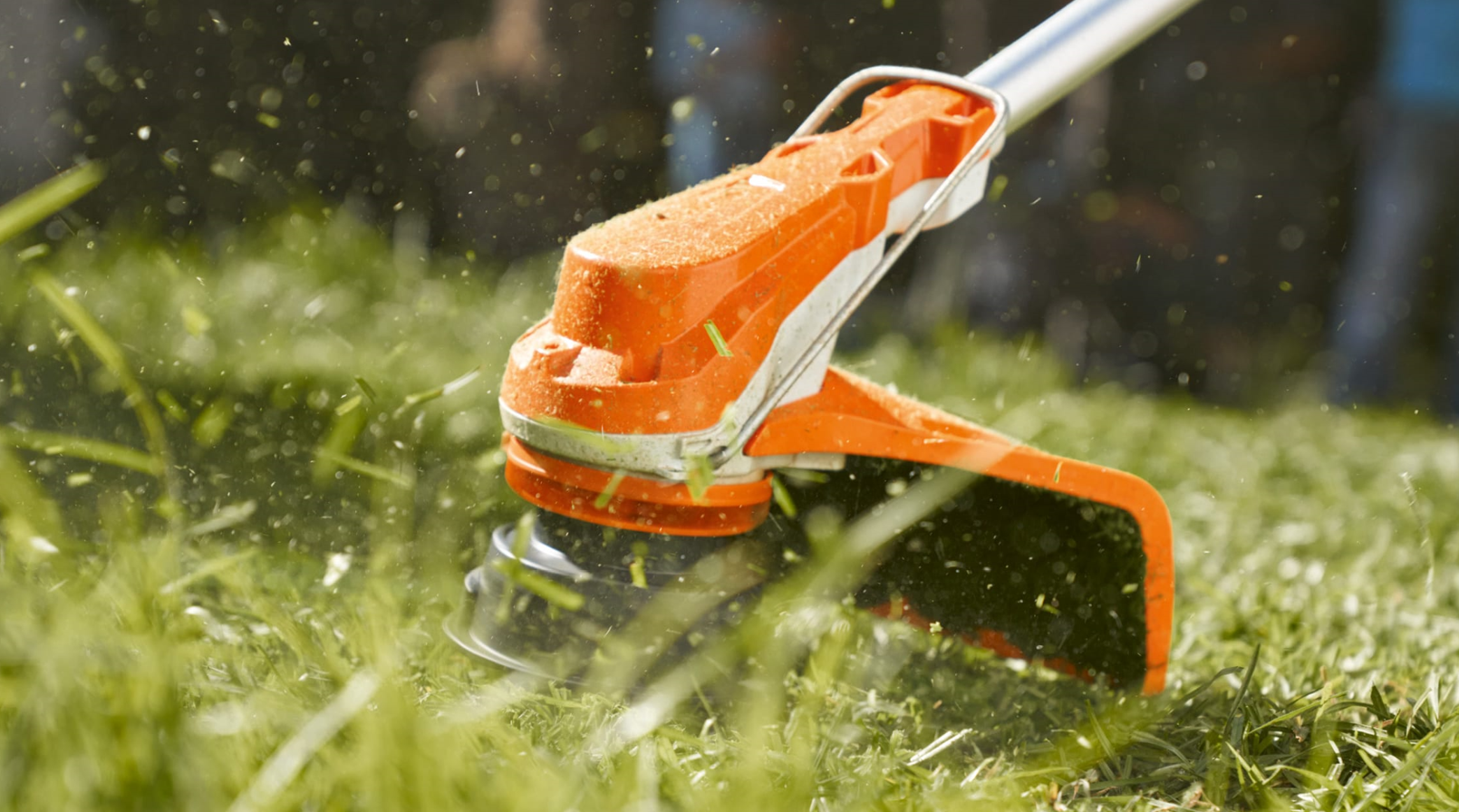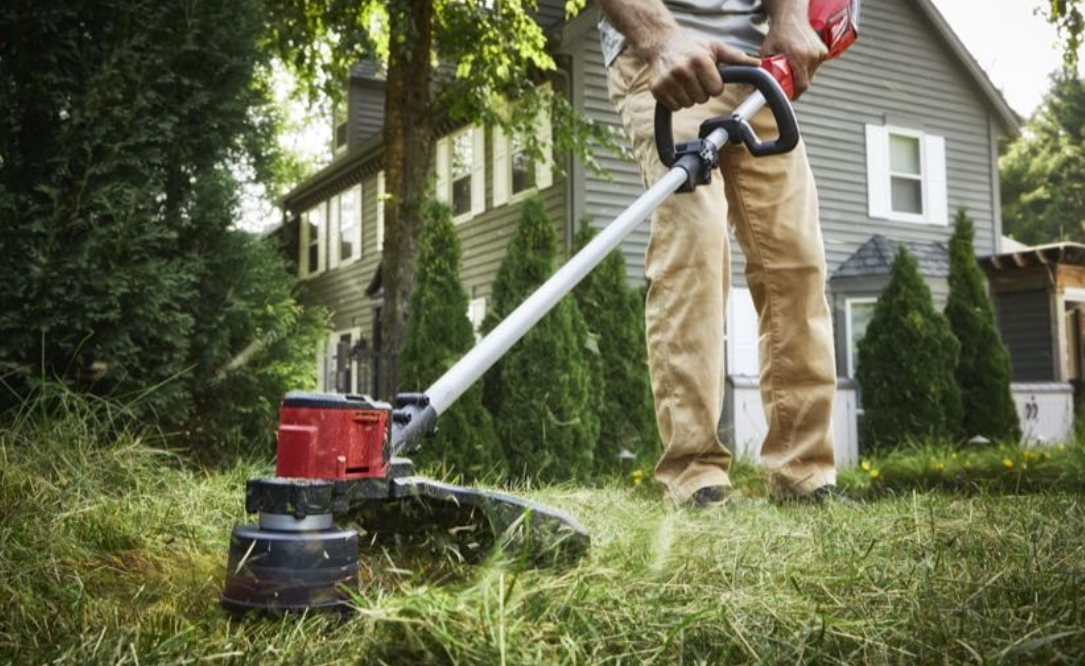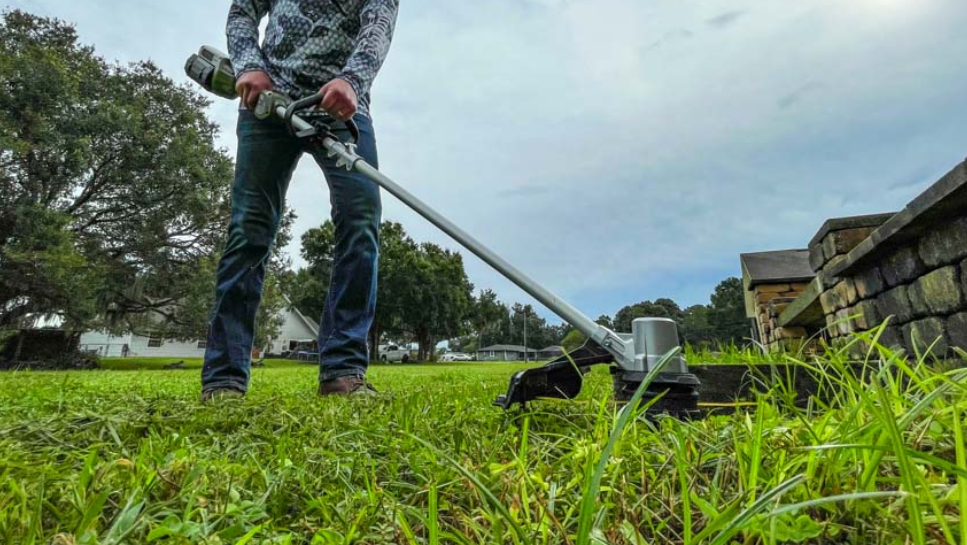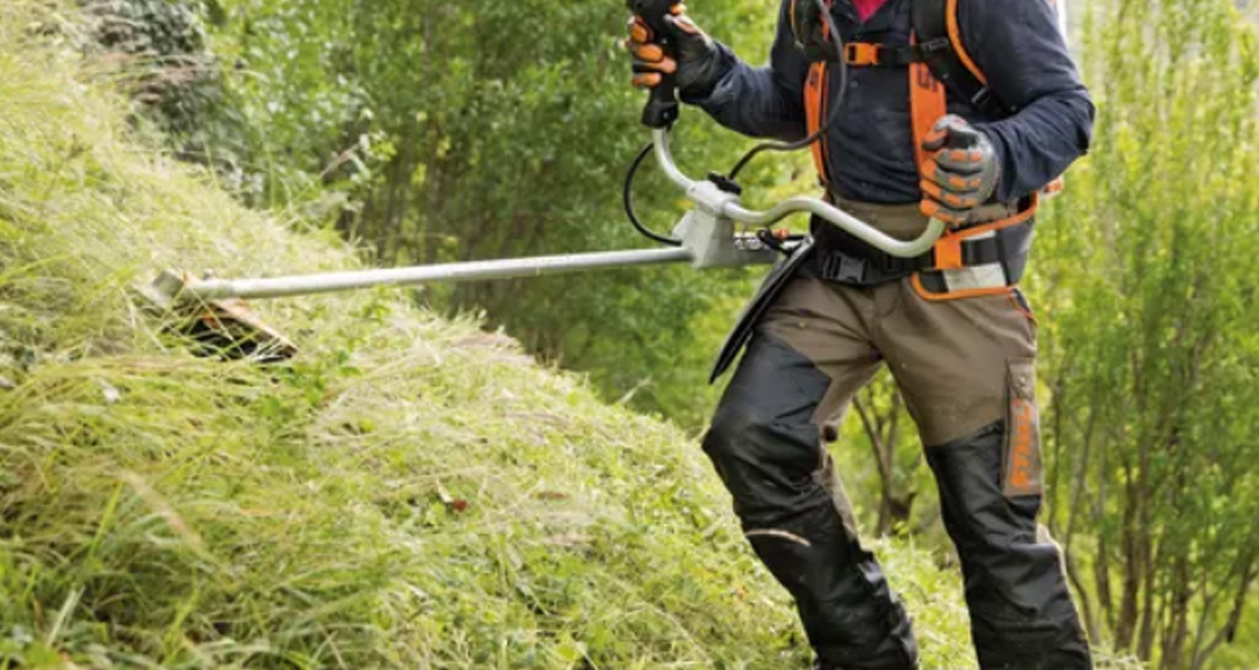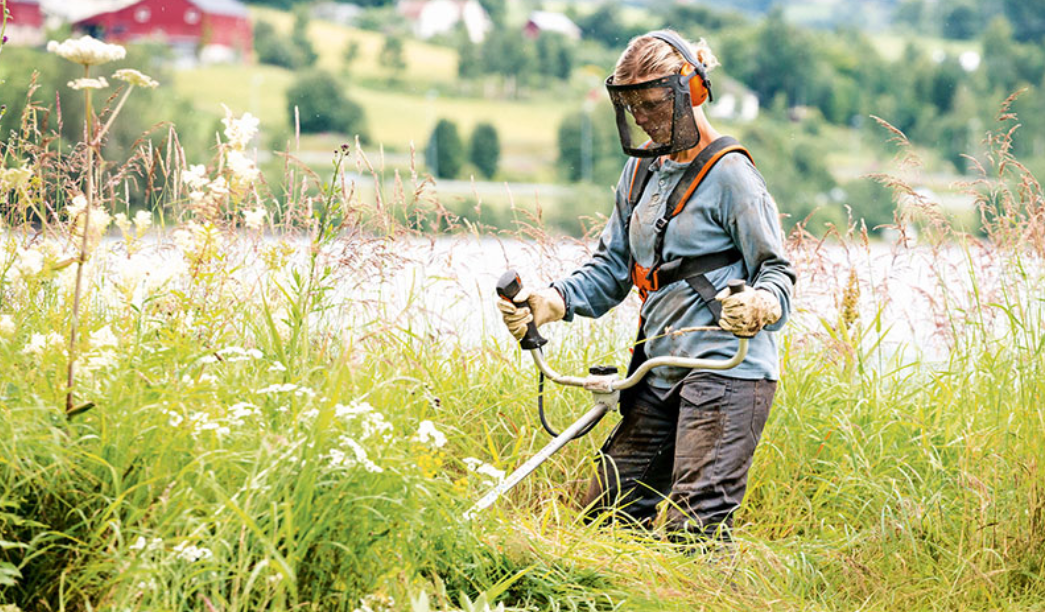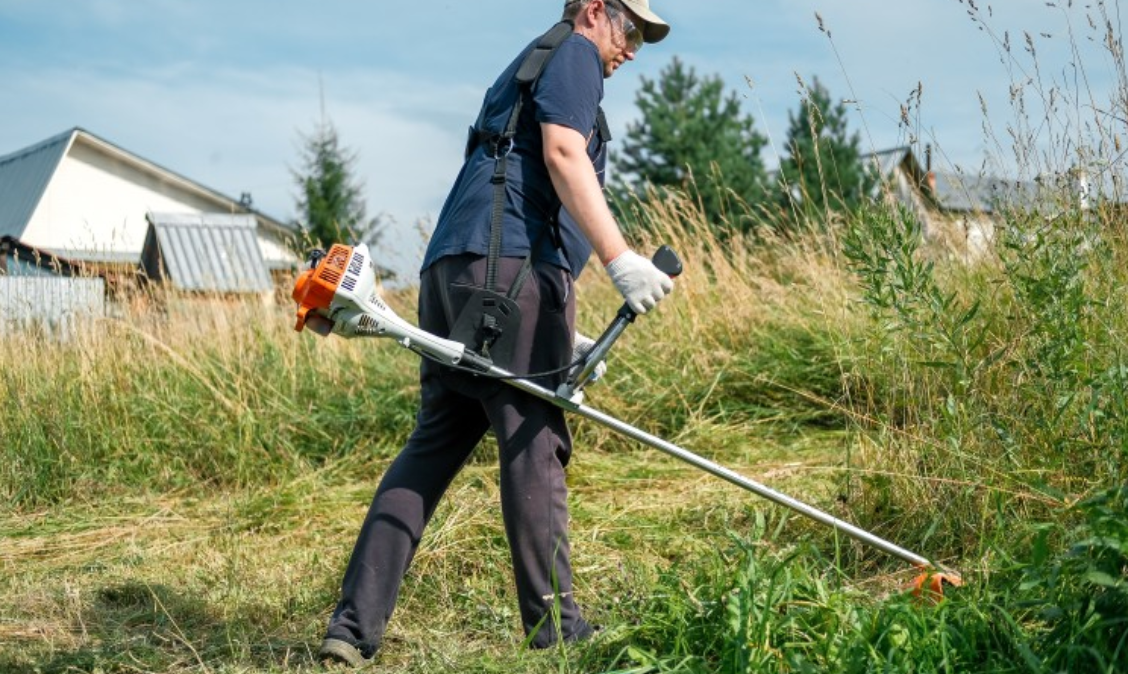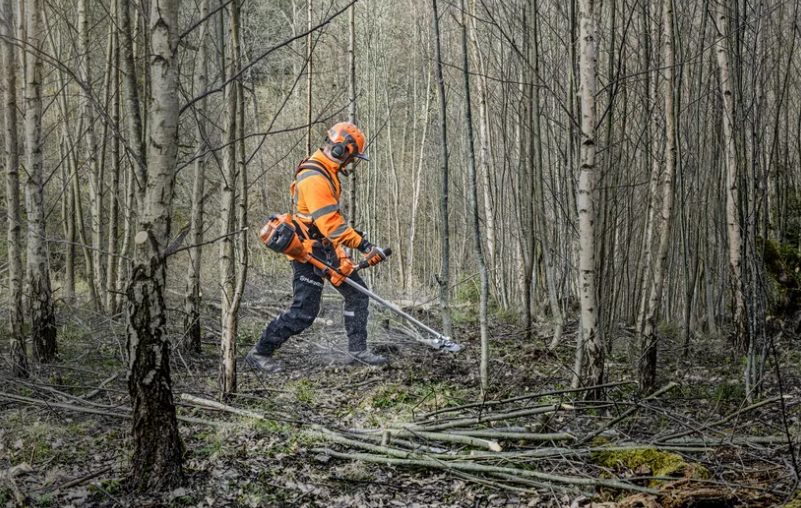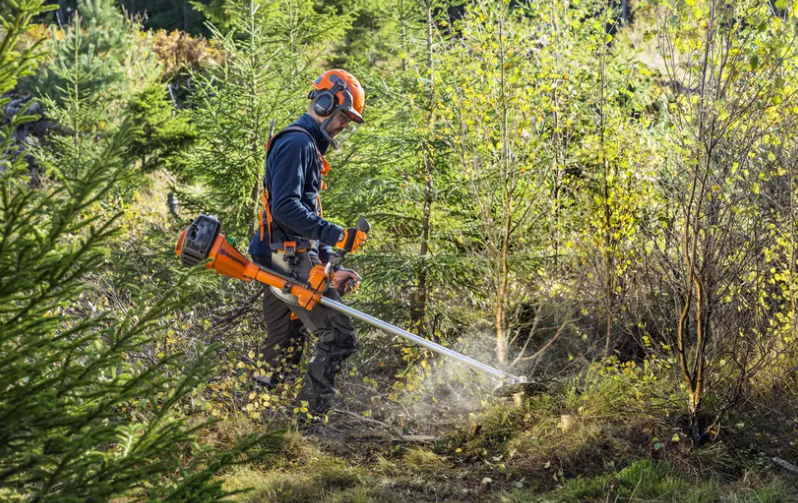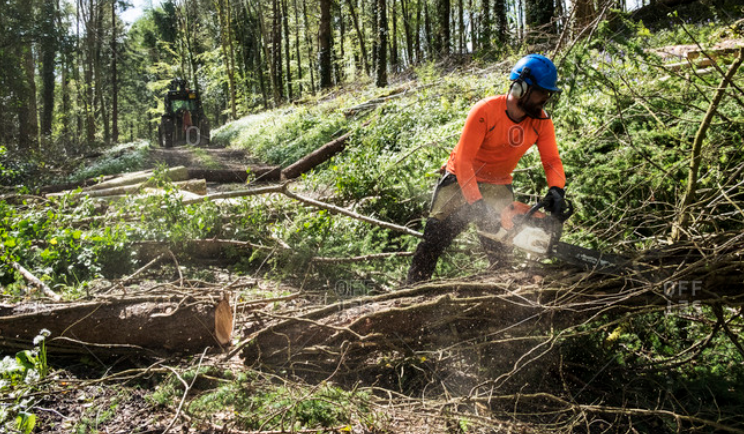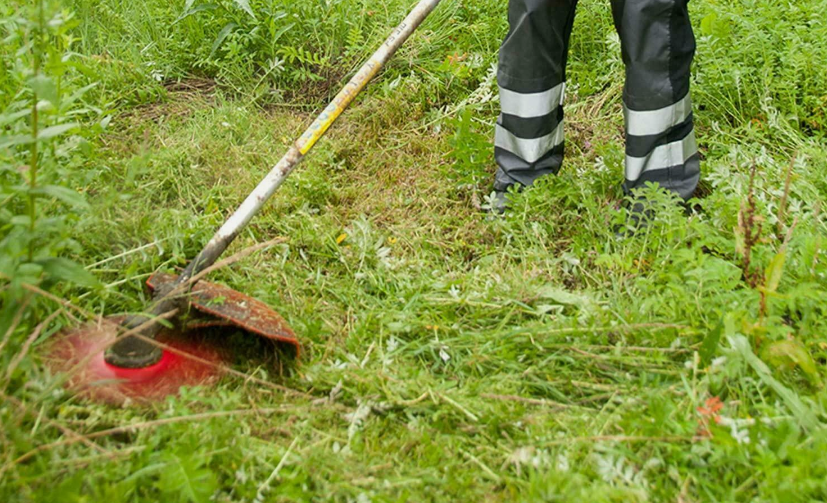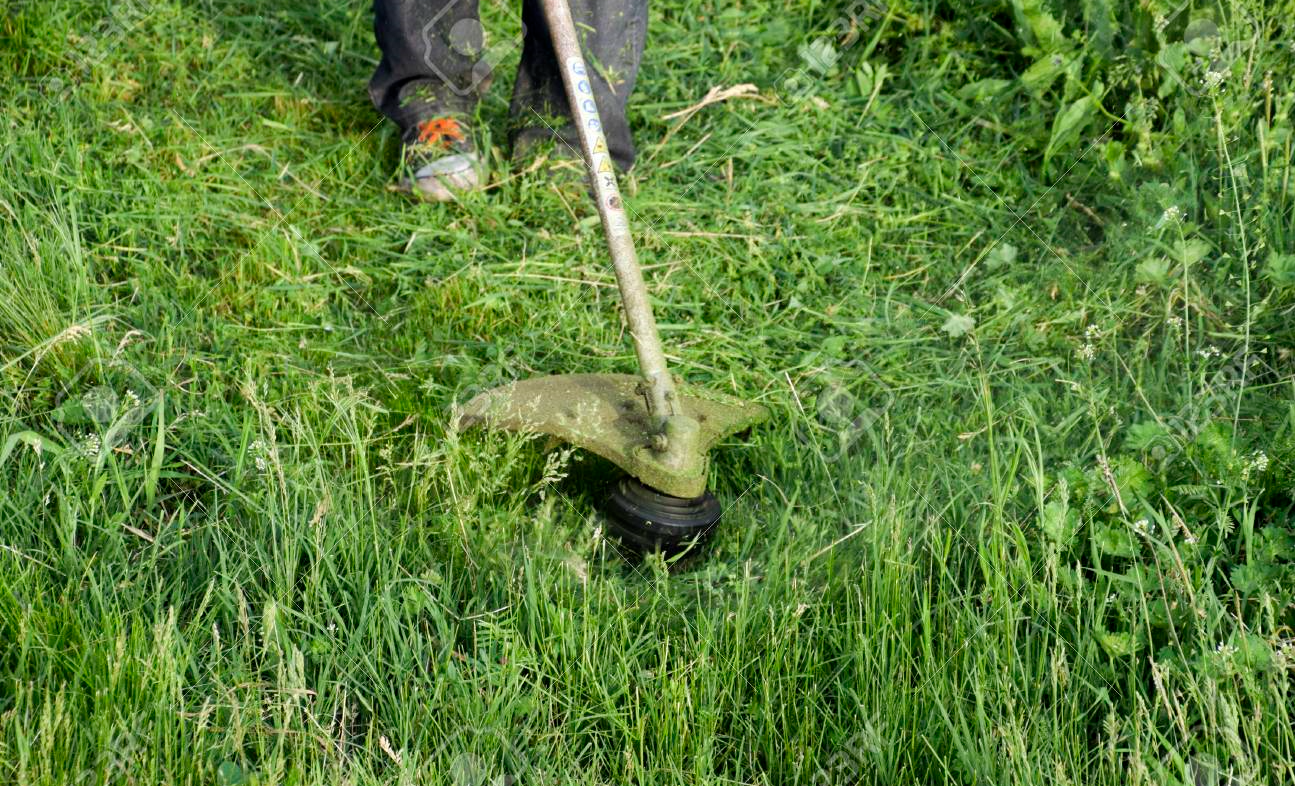Maintaining a well-manicured lawn or clearing overgrown vegetation requires the right outdoor power tool. When it comes to tackling various tasks, such as trimming grass, cutting through dense brush, or clearing large areas, three popular options come to mind: the grass trimmer, brushcutter, and clearing saw. Each tool has its unique features and capabilities, making it essential to understand their differences to make an informed choice. In this article, we will explore the characteristics, applications, and considerations associated with these tools to help you choose the right one for your specific needs.
Grass Trimmer:
A grass trimmer, also known as a string trimmer or weed eater, is a handheld outdoor power tool used for cutting grass and weeds in areas that are difficult to reach with a lawnmower. It consists of a long shaft with a motor at one end and a cutting mechanism at the other end. The cutting mechanism typically uses a rotating nylon string or line to trim the grass.
Grass trimmers are available in both gas-powered and electric models. Gas-powered trimmers are typically more powerful and suitable for larger areas, while electric trimmers are lighter, quieter, and require less maintenance. Some electric trimmers are corded, requiring an electrical outlet, while others are cordless and powered by rechargeable batteries.
Grass trimmers are commonly used for maintaining small to medium-sized lawns, edging along sidewalks and driveways, and trimming grass in tight spaces such as around trees, fences, and flower beds. They offer precision cutting and can easily reach areas that are inaccessible to a lawnmower. However, it's important to note that grass trimmers are not designed for cutting through thick, woody vegetation or heavy brush. For such tasks, more powerful tools like brushcutters or clearing saws are recommended.
Overall, grass trimmers are versatile and convenient tools for keeping your lawn well-maintained and achieving a clean, manicured look. They are easy to use, lightweight, and perfect for trimming grass in hard-to-reach areas.
Applications of Grass Trimmers:
Lawn Maintenance:
Grass trimmers are commonly used for maintaining small to medium-sized lawns by trimming the grass in areas that are difficult to reach with a lawnmower, such as along fences, around trees, and near flower beds.
Edging:
Grass trimmers are ideal for creating clean and precise edges along sidewalks, driveways, and garden borders, giving the lawn a neat and well-defined appearance.
Trimming around Obstacles:
Grass trimmers are effective at trimming grass and weeds in tight spaces and around obstacles like rocks, garden ornaments, and utility poles.
Weed Control:
Grass trimmers can be used to trim and control the growth of weeds in areas where they are not wanted, preventing them from spreading and overtaking the lawn.
Touch-up Work:
Grass trimmers are handy for touch-up work after mowing, allowing you to reach areas that were missed or need further trimming.
Limitations of Grass Trimmers:
Cutting Power:
Grass trimmers have limited cutting power compared to more heavy-duty tools like brushcutters or clearing saws. They are designed for grass trimming and light weed control, and may struggle with thick, woody vegetation or heavy brush.
Area Coverage:
Grass trimmers are best suited for small to medium-sized lawns and areas that require precision trimming. If you have a large lawn or need to clear extensive overgrowth, a more powerful tool may be necessary.
Battery Life (Cordless Models):
Cordless grass trimmers that are powered by rechargeable batteries have a limited runtime. Depending on the battery capacity, you may need to recharge or replace the battery during longer trimming sessions.
Cord Length (Corded Models):
Corded grass trimmers require an electrical outlet and are limited by the length of the power cord. You may need to use an extension cord or be mindful of the cord's reach.
Cutting Line Breakage:
The cutting line of a grass trimmer can wear down or break with use, requiring replacement or restringing. This can be a minor inconvenience during trimming sessions.
It's important to consider these applications and limitations when using a grass trimmer to ensure effective and efficient use of the tool for your specific needs.
Brushcutter:
A brushcutter, also known as a brush cutter or clearing saw, is a powerful outdoor power tool used for cutting dense vegetation, thick brush, and woody plants. It is designed to tackle tougher and more demanding cutting tasks compared to grass trimmers. The main difference between a brushcutter and a grass trimmer is the cutting power and the type of cutting attachments used.
Brushcutters typically have a larger engine and a heavier-duty cutting mechanism, allowing them to handle more challenging vegetation. They are commonly used for tasks such as clearing overgrown areas, cutting tall grass, removing small saplings, and tackling weeds and brush in areas that are difficult to access with a lawnmower or a regular trimmer.
The cutting mechanism of a brushcutter typically involves a metal blade or a cutting head with a solid or serrated blade. The blades are designed to cut through thick vegetation, including woody stems and tough weeds. The cutting attachments can be changed depending on the specific cutting needs, allowing for versatility in tackling different types of vegetation.
Brushcutters are available in both gas-powered and electric models. Gas-powered brushcutters are generally more powerful and suitable for heavy-duty applications, while electric brushcutters are typically lighter and quieter, making them more suitable for lighter tasks and residential use.
When using a brushcutter, it is important to follow safety precautions, such as wearing protective clothing, including goggles, gloves, and sturdy footwear. The power and cutting ability of a brushcutter make it a highly effective tool for clearing and maintaining overgrown areas, but it requires proper handling and caution to ensure safety during operation.
Applications of Brushcutters:
Clearing Overgrown Areas:
Brushcutters are highly effective in clearing dense vegetation, overgrown grass, and thick brush in areas where a lawnmower or a regular trimmer would be insufficient. They can handle tough and woody vegetation, making them ideal for clearing fields, vacant lots, and areas with heavy undergrowth.
Landscaping and Property Maintenance:
Brushcutters are commonly used in landscaping and property maintenance to trim and shape shrubs, hedges, and bushes. They can easily tackle thicker branches and dense foliage, allowing for precise trimming and shaping.
Vegetation Control:
Brushcutters are useful for controlling unwanted vegetation, including invasive plants and weeds. They can cut through tough weeds and grasses, preventing them from spreading and taking over an area.
Agricultural and Forestry Applications:
Brushcutters are often employed in agricultural and forestry settings for tasks such as clearing fence lines, maintaining firebreaks, removing undergrowth, and preparing land for planting.
Roadside Maintenance:
Brushcutters are commonly used by road maintenance crews to clear vegetation along roadsides, ensuring clear visibility for drivers and preventing overgrowth from encroaching on roadways.
Limitations of Brushcutters:
Weight and Handling:
Brushcutters are generally heavier and bulkier than grass trimmers, which can make them more tiring to use, especially during extended periods of operation. Proper handling and technique are important to minimize fatigue and ensure safe operation.
Noise and Vibration:
Brushcutters, especially gas-powered models, can produce high levels of noise and vibration during operation. It is important to wear appropriate hearing protection and take regular breaks to prevent discomfort and potential long-term health issues.
Safety Considerations:
Due to their powerful cutting ability, brushcutters require caution and proper safety precautions. The blades can cause serious injury if mishandled or if debris is thrown during operation. It is essential to wear protective gear and follow the manufacturer's instructions for safe operation.
Limited Precision:
While brushcutters are effective for clearing dense vegetation, they may not provide the same level of precision as grass trimmers when it comes to fine trimming or edging tasks. For precise and detailed work, additional tools or techniques may be necessary.
Environmental Impact:
The use of brushcutters, particularly gas-powered models, can contribute to noise and air pollution. Electric models or alternative manual tools may be more environmentally friendly options for certain applications.
Understanding these applications and limitations will help you determine when and how to best utilize a brushcutter for your specific needs while ensuring safety and efficiency.
Clearing Saw:
A clearing saw, also known as a clearing saw or brush saw, is a powerful cutting tool used for heavy-duty vegetation clearing and land management tasks. It is similar to a brushcutter but is typically designed for even more demanding cutting applications. Clearing saws are commonly used in forestry, land clearing, and agricultural settings.
The main difference between a clearing saw and a brushcutter lies in their cutting capacity and the type of cutting attachments used. Clearing saws are designed to handle thicker and more challenging vegetation, including small trees, saplings, and dense brush.
Clearing saws are typically equipped with a heavy-duty cutting blade, such as a circular saw blade or a metal brush blade. The blades are specifically designed to cut through woody stems, thick undergrowth, and tough vegetation. The cutting attachments are often larger and more robust compared to those used in brushcutters.
The power source for clearing saws can vary. Gas-powered clearing saws are common, offering high performance and mobility. Electric clearing saws are also available, providing a quieter and more environmentally friendly alternative for certain applications.
It is important to note that clearing saws are powerful and potentially dangerous tools. Proper training, safety precautions, and protective gear are essential when operating a clearing saw to ensure personal safety and effective use.
Applications of Clearing Saw:
Vegetation Clearing:
Clearing saws are primarily used for clearing dense vegetation, including small trees, shrubs, thick brush, and weeds. They are effective in areas where traditional lawnmowers or trimmers are inadequate.
Landscaping and Property Maintenance:
Clearing saws are useful for maintaining large properties, parks, and recreational areas. They can quickly remove overgrown vegetation, clear paths, and create neat and well-maintained landscapes.
Forestry and Logging:
Clearing saws are commonly employed in forestry and logging operations to clear undergrowth, cut down small trees, and maintain forested areas. They help improve access and visibility for logging activities.
Right-of-Way Maintenance:
Clearing saws are used to maintain utility rights-of-way, such as power lines, pipelines, and roadways. They can clear vegetation that poses a risk to infrastructure or obstructs access for maintenance and repair.
Firebreak Creation:
Clearing saws are utilized to create firebreaks, which are cleared areas designed to prevent the spread of wildfires. By cutting down vegetation and creating a barrier, they help control and contain fires.
Limitations of Clearing Saw:
Weight and Fatigue:
Clearing saws can be heavy and require physical strength to operate. Prolonged use can lead to operator fatigue, making it necessary to take breaks and use proper lifting techniques.
Noise and Vibration:
Clearing saws generate significant noise and vibration during operation. Operators should wear appropriate hearing protection and take measures to minimize vibration-related discomfort or injuries.
Safety Considerations:
Clearing saws have sharp cutting blades and can be dangerous if not handled properly. Operators must receive proper training, use appropriate safety gear, and follow safety guidelines to prevent accidents and injuries.
Precision Limitations:
Clearing saws are designed for heavy-duty cutting and may not provide the same level of precision as smaller trimming tools. They may not be suitable for tasks that require fine or delicate cutting.
Environmental Impact:
Clearing saws can have an environmental impact, particularly when used in sensitive ecosystems. Care should be taken to minimize damage to native plants, wildlife habitats, and water bodies.
Limited Reach:
Clearing saws have a limited reach compared to other land-clearing equipment. They may not be suitable for clearing vegetation in hard-to-reach or inaccessible areas.
It is important to assess the specific requirements of a project and consider these limitations when choosing to use a clearing saw.
Considerations for Choosing the Right Tool:
When deciding between a grass trimmer, brushcutter, or clearing saw, several factors should be considered:
Task Requirements:
Assess the nature of the tasks you will be performing. If you mainly need to trim grass and maintain a small lawn, a grass trimmer should suffice. For cutting through thicker vegetation and brush, a brushcutter would be more suitable. If heavy-duty clearing is required, a clearing saw is the best option.
Cutting Capacity:
Evaluate the thickness and density of the vegetation you need to cut. Grass trimmers are suitable for light trimming and edging of grass and weeds. Brushcutters are more powerful and can handle thicker vegetation, including small bushes and light undergrowth. Clearing saws are designed for heavy-duty cutting, capable of tackling dense brush, small trees, and tough vegetation.
Power Source:
Consider the power source that suits your needs. Grass trimmers and brushcutters are available in both gas-powered and electric models. Gas-powered tools offer more mobility and power but require fuel and regular maintenance. Electric models are quieter, require less maintenance, and are more environmentally friendly. Clearing saws are typically gas-powered due to their heavy-duty cutting requirements.
Maneuverability:
Assess the size and layout of the area you'll be working in. Grass trimmers are lightweight and easy to maneuver, making them ideal for small and tight spaces. Brushcutters and clearing saws are bulkier and heavier, which can make them more challenging to handle in confined areas.
Safety Considerations:
Consider the safety features and requirements of each tool. Clearing saws and brushcutters have more power and larger cutting blades, increasing the potential for accidents. Ensure that you have the necessary safety gear, such as protective clothing, goggles, and ear protection, and follow safety guidelines when operating these tools. Meanwhile, look for safety features such as blade guards, harnesses, and vibration reduction systems, especially when considering brushcutters and clearing saws. These features enhance user safety and reduce fatigue during prolonged use.
Budget and Brand:
Consider your budget and the cost of the tools. Generally, grass trimmers are the most affordable, followed by brushcutters, and then clearing saws. However, prices can vary depending on the brand, features, and power source. Set a budget and research reputable brands known for producing reliable and durable outdoor power tools. Consider warranties, customer reviews, and after-sales support.
Noise and Vibration:
Evaluate the noise and vibration levels of the tools, especially if you'll be working for extended periods. Clearing saws and brushcutters tend to be noisier and generate more vibration compared to grass trimmers. If noise and vibration are a concern, electric models or tools with anti-vibration features may be preferable.
Personal Experience and Skill Level:
Assess your experience and comfort level with using these tools. Clearing saws and brushcutters require more strength and skill to operate effectively and safely. If you're a beginner or have limited experience, starting with a grass trimmer and gradually progressing to more powerful tools may be a wise approach.
By considering these factors, you can make an informed decision on whether a grass trimmer, brushcutter, or clearing saw is the most suitable tool for your specific cutting needs.
Conclusion
Choosing the right outdoor power tool, whether it's a grass trimmer, brushcutter, or clearing saw, depends on the specific tasks you need to accomplish. Assessing the requirements, power, safety features and budget will help you make an informed decision. Remember to prioritize safety, proper usage, and maintenance to ensure the longevity and efficiency of your chosen tool. Whether you're a homeowner or a professional, selecting the right tool will make your lawn maintenance or clearing tasks more manageable and efficient.
Post time: Oct-07-2023


